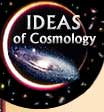|

Modern
Hubble Telescope view of the barred spiral space galaxy
NGC 1300.

Planetary
nebula as recently viewed by the Hubble Space Telescope. There are actually
spheres of glowing gas around the central bright star, but looking through
these they appear as rings.
|

Types of Nebulae, as known early in the 20th century. |
Edwin
Hubble based his classification scheme
for the nebulae outside our galaxy on a scientific theory of nebular evolution.
He searched for "a thread of physical significance" that could
"vitalize a system of classification." Yet when he published his
scheme in 1926, Hubble claimed that it was "based primarily on the
structural forms of photographic classification which should be entirely
independent of theoretical considerations…" Theory inspired Hubble,
but observations made a more convincing argument to persuade other astronomers
to accept his classification system. Hubble
found that the great majority of extra-galactic nebulae could be lined
up in "a progressive sequence ranging from globular masses of unresolved
nebulosity to widely open spirals whose arms are swarming with stars.
The sequence comprises two sections, elliptical nebulae and spirals, which
range into each other." As he moved from elliptical smears of stars
toward more elaborately structured nebulae, he found the spirals divided
into two parallel sequences, one of normal spirals, the other of spirals
that had a bar of condensed material across the middle. Hubble's so-called
"tuning-fork diagram" is still in wide use.

Many
speculate that this diagram shows a sequence of
evolutionary change, but no evidence for this emerged,
and modern ideas give more complicated explanations
for the differences.
Hubble
spoke of
"early" and "late" spirals, a terminology that reveals
he was thinking about a theory of evolution of nebulae. He insisted, however,
that the words early and late, "in spite of their temporal connotations,
appear to be the most convenient adjectives available for describing relative
positions in the sequence. The sequence of structural forms is an observed
phenomenon."
 |
 |
| Types
of Nebulae |
|
|


